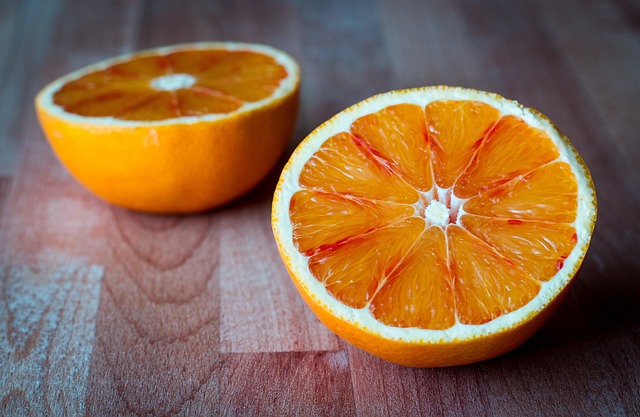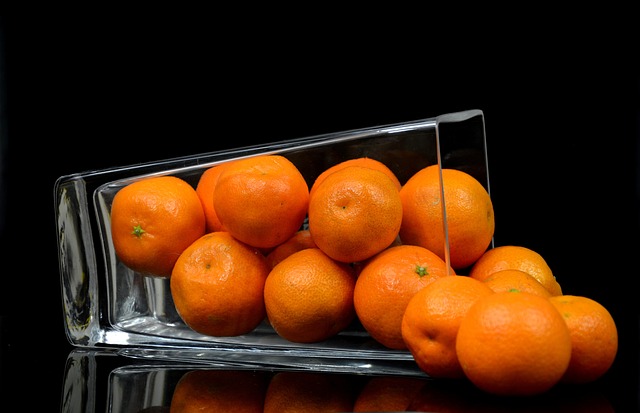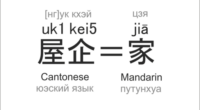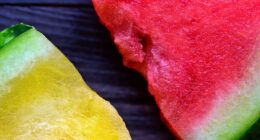Mandarin is a citrus fruit with loose, easily peelable skin, while orange is a larger citrus with a thicker, tougher peel.
TL;DR Mandarin Vs. Orange
Mandarins are a specific type of citrus fruit that belongs to the mandarin orange family. They are smaller in size with loose, easy-to-peel skin and a sweet taste. Mandarins are known for their vibrant color and refreshing flavor.
Oranges refer to a broad category of citrus fruits that includes various varieties such as navel oranges, Valencia oranges, and blood oranges. Oranges tend to be larger than mandarins with thicker skin that is harder to peel. They have a slightly tangy or tart taste compared to the sweetness of mandarins.
Mandarin

Mandarins, also known as Citrus reticulata, are a variety of citrus fruit that originated in China. They have been cultivated for centuries and are beloved for their sweet and tangy flavor. One of the key characteristics that sets mandarins apart is their small size and easy-to-peel skin. When you hold a mandarin in your hand, it feels like holding a little burst of sunshine.
These tiny fruits come in various varieties, such as Clementines, Tangerines, Satsumas, and more. Each type has its own distinct taste and texture but shares the same delightful qualities that make mandarins so popular.
In terms of appearance, mandarins typically have a bright orange hue with an occasional tinge of red or green on the peel. The segments inside are juicy and tender, bursting with refreshing citrus goodness.
What makes mandarins truly special is their versatility in both culinary delights and healthy snacking options. You can enjoy them fresh off the tree or use them to create mouthwatering salads, desserts, marinades or even cocktails! These little gems add a zesty kick to any dish they grace.
Orange

One of the key characteristics of oranges is their bright orange color, which indicates their ripeness. The juicy flesh inside is filled with sweet, tangy flavor that bursts in your mouth when you take a bite. Oranges are known for their high vitamin C content, which helps boost our immune system and promote healthy skin.
Oranges can be enjoyed in various ways – whether you prefer eating them fresh as a snack or squeezing out the juice to make a refreshing drink. They can also be used in recipes to add a burst of citrusy flavor to dishes like salads or desserts.
Aside from being rich in vitamin C, oranges also provide us with dietary fiber, potassium, and antioxidants. These nutrients contribute to heart health, digestion, and may even help prevent certain chronic diseases.
Mandarin Vs. Orange – Key differences
| Aspect | Mandarin | Orange |
|---|---|---|
| Size | Smaller in size, typically palm-sized. | Larger, usually about the size of a tennis ball. |
| Shape | Often slightly flattened at the top and bottom. | Generally round and symmetrical. |
| Skin Texture | Thin, loose, and easily peelable skin. | Thicker, tougher, and harder-to-peel skin. |
| Segments | Separated into small, easy-to-separate segments. | Divided into larger, more challenging-to-separate segments. |
| Varieties | Various mandarin varieties, including clementines and satsumas. | Different types of oranges, such as navel oranges and Valencia oranges. |
| Flavor | Sweet, often with a more intense and concentrated flavor. | Sweet, with a slightly milder and less concentrated flavor. |
| Seed Availability | Many mandarin varieties are seedless. | Most varieties have seeds, though seedless oranges exist. |
| Seasonality | Typically in season during the winter months. | Available at various times throughout the year, depending on the type. |
| Uses | Often eaten fresh as a snack or in salads. | Consumed fresh, juiced, or used in various culinary applications. |
| Juiciness | Generally less juicy compared to oranges. | Oranges are typically juicier. |
| Color of Flesh | Can range from pale orange to deep orange. | Typically has a bright orange or orange-red flesh. |
Nutritional Differences between Mandarin and Orange
Mandarins and oranges are both citrus fruits, and they share many nutritional similarities, but there are some differences. Here’s a comparison of their nutritional content based on a typical serving size (100 grams) of each:
Mandarin (100 grams):
- Calories: 53 kcal
- Carbohydrates: 13.3 grams
- Sugars: 9.18 grams
- Dietary Fiber: 1.8 grams
- Protein: 0.81 grams
- Fat: 0.31 grams
- Vitamin C: 26.7 mg (45% of the Daily Value)
- Vitamin A: 681 IU (14% of the Daily Value)
- Potassium: 166 mg (5% of the Daily Value)
Orange (100 grams):
- Calories: 43 kcal
- Carbohydrates: 8.2 grams
- Sugars: 8.2 grams
- Dietary Fiber: 2.4 grams
- Protein: 1.0 grams
- Fat: 0.2 grams
- Vitamin C: 53.2 mg (89% of the Daily Value)
- Vitamin A: 225 IU (5% of the Daily Value)
- Potassium: 181 mg (5% of the Daily Value)
Key Nutritional Differences:
Vitamin C: Oranges have a significantly higher vitamin C content compared to mandarins, providing nearly double the amount per 100 grams. Vitamin C is essential for immune function, skin health, and wound healing.
Calories: Mandarins have slightly more calories per 100 grams compared to oranges, but the difference is not substantial.
Sugar: The sugar content in mandarins is slightly lower than in oranges, but both are relatively high in natural sugars due to their sweet flavor.
Dietary Fiber: Mandarins have a bit less dietary fiber compared to oranges. Fiber is important for digestive health and can help regulate blood sugar levels.
Both mandarins and oranges are nutritious fruits, and the differences in their nutritional content are relatively minor. They are excellent sources of vitamin C and provide dietary fiber, making them healthy choices for a balanced diet.
Image Credits
Featured Image By – Agnieszka from Pixabay
Image 2 By – Moira Nazzari from Pixabay








